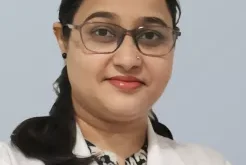Breast cancer involves abnormal growth of cells in breasts that forms a lump or mass of tissues in the breasts. It is the most common kind of cancer affecting women and rarely affects men too. When detected early, breast cancer can be cured, and fatalities can be considerably prevented. One of the very preliminary ways of detecting breast cancer is to find breast lump – a growth of tissue that develops within one’s breast, through self-examination or with the help of a doctor. Self-breast examination and screening can detect breast lesions before they turn into a lump. A breast lump sometimes could be a symptom of breast cancer.
Breast lump could be of several kinds and may vary in terms of how they appear. One may notice a distinct lump with definite borders, a firm, hard area within the breast, a thickened, slightly more prominent area in the breast different from the surrounding breast tissues, other changes in the breast like redness, dimpling or pitting of the skin, one breast larger than the other, nipple changes like that’s pulled inward or spontaneous fluid discharge from the nipple and persistent breast pain or tenderness that may increase during menstruation. It must be noted that not all breast lumps are cancerous. Most breast lumps result from non-cancerous or benign conditions.
Not just in women, breast lumps can occur in men too as hormonal changes can cause lumps which eventually disappear over time. However, there are several other factors that can cause a lump in the breast.
Causes of breast lumps
Some of the possible causes of lump in the breast are:
● breast cysts, soft, fluid-filled sacs
● milk cysts also known as galactoceles, sacs filled with milk that occurs during breast-feeding
● fibrocystic breasts, a condition in which breast
tissue feels lumpy in texture and is sometimes accompanied by pain
● fibroadenoma, a noncancerous rubbery lump that move easily within the breast tissue and rarely become cancerous
● hamartoma, a benign, tumorlike growth
● intraductal papilloma, a small, non-cancerous tumour in a milk duct
● lipoma, a slow-growing, noncancerous, fatty lump
● mastitis, an infection of the breast
● some kind of injury
● breast cancer
Identifying breast lumps
While not all breast lumps are cancerous, it is essential to identify when one gets a lump as some could be carcinogenic. One must be aware of how a breast without lumps feels like and what happens to the breasts when there’s a lump. Usually, breast tissue varies in consistency with the upper-outer part of the breast being firm and the inner lower parts being comparatively tender. Breasts in women can become lumpy during the menstrual cycle. Also, with increasing age, breasts tend to get less dense.
In case there’s a change in the usual texture of the breast, it is advisable to get in touch with a doctor to examine the lump instead of self-examination.
Signs that indicate one must see the doctor
It is recommended for one to seek immediate clinical help if:
● One discovers a new lump
● An area of the breast is remarkably different from the rest
● A lump does not go away even after menstruation
● A lump change or grow larger
● There are bruises in the breast for no reasons
● The breast skin reddens or begins to pucker like peel of an orange
● The nipple gets inverted
● There is bloody discharge from the nipple
Treating breast lumps
In case the doctor is unable to identify the cause of the breast lumps following a physical examination, the doctor may use the following ways to do the same.
Mammogram: It is a 2D X-ray of the breast that helps doctors to detect breast abnormalities.
Ultrasound: It is a non-invasive, painless procedure using sound waves to produce images of the breast.
Magnetic Resonance Imaging (MRI): This test takes detailed pictures of breasts through a magnetic field and radio waves.
Fine-Needle Aspiration: In this a needle is used to remove fluid from breast lump. Non-cancerous lumps go away once the fluid is removed. When the fluid appears to be cloudy or bloody, it is further evaluated for cancer cells.
Biopsy: It is a procedure to remove a sample of tissue for analysis under a microscope.
Not all breast lumps need treatment. In case of a breast infection induced lump, antibiotics would be adequate. In case of cysts, fluids need to be removed from the lumps. In case the lump is found to be cancerous, it can be treated through:
● Lumpectomy or removal of the lump
● Mastectomy or removal of the abnormal breast tissue
● Chemotherapy that uses drugs to fight or destroy cancer
● Radiation that uses radioactive rays or materials to fight cancer
Lumps in the breasts do not always require treatment. However, it is essential to identify the causes of breast lumps as they could be cancerous in some cases. Therefore it is important to be aware of the signs of breast lump and connect with a doctor for early detection.
Dr Krithika Murugan, Surgical Oncologist at HCG Cancer Hospital, Bengaluru
 Newspatrolling.com News cum Content Syndication Portal Online
Newspatrolling.com News cum Content Syndication Portal Online







